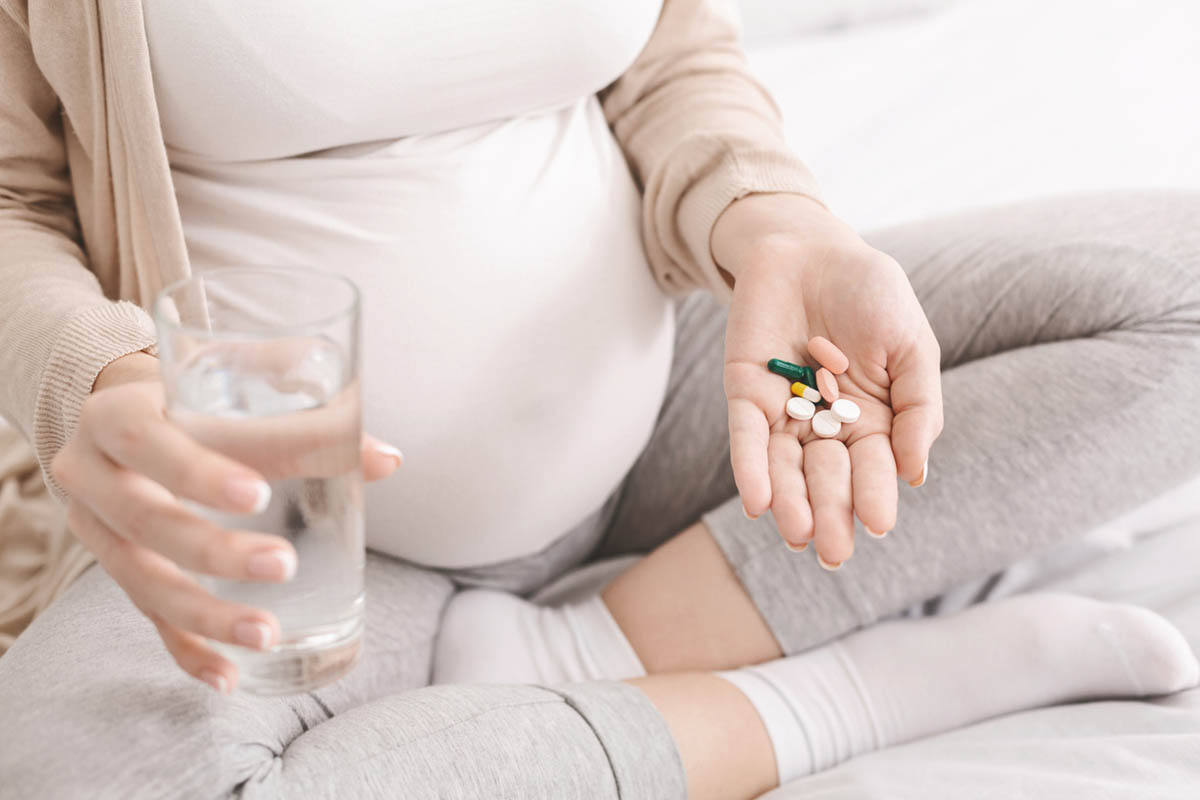Because this piece does not have an abstract, we have provided for your benefit the first 3 sentences of the full text.
In the treatment of bipolar disorder, the manic phase has received the most attention from the pharmaceutical industry. However, it is actually the bipolar depressed phase that has the largest impact on public health due to the proportion of time spent depressed and the associated disability. The bipolar depressive episodes are also the most lethal phase of the disorder, associated with the majority of lifetime suicide attempts, which occur in 25%-56% of patients, and deaths by suicide, which occur in 10%-19%.
See letter by Kantrowitz et al
This work may not be copied, distributed, displayed, published, reproduced, transmitted, modified, posted, sold, licensed, or used for commercial purposes. By downloading this file, you are agreeing to the publisher’s Terms & Conditions.

In the treatment of bipolar disorder, the manic phase has received the most attention from the pharmaceutical industry. However, it is actually the bipolar depressed phase that has the largest impact on public health due to the proportion of time spent depressed and the associated disability.1,2 The bipolar depressive episodes are also the most lethal phase of the disorder, associated with the majority of lifetime suicide attempts, which occur in 25%-56% of patients, and deaths by suicide, which occur in 10%-19%.3 Individuals with bipolar disorder spend 3 times longer in the depressive phase than in the manic phase.4 Bipolar depression is highly disabling and causes marked occupational and social impairment. Complicating this issue, it is the phase of illness where the efficacy of established treatments is weakest. The efficacy of antidepressants in the treatment of bipolar depression remains unclear at best, and data from unipolar depression studies provide little guidance.5 The 3 largest and most methodologically rigorous trials of antidepressants in bipolar depression (paroxetine,7 paroxetine or bupropion,5 and agomelatine6) have been negative. Antidepressants confer a documented risk of induction of mania and a shortening of the interepisode window. Lithium has limited efficacy in bipolar depression.8 Some second-generation antipsychotics (eg, olanzapine/fluoxetine combination,9 quetiapine,10 and lurasidone11), but not all, demonstrate efficacy in bipolar depression. However, antipsychotics also have substantial tolerability and safety issues, including the risk of sedation, metabolic syndrome, and tardive dyskinesia.12 Even electroconvulsive therapy, the fall-back option in severe or refractory depression, is less effective in bipolar than in unipolar depression.13 The unmet clinical need is greatest in bipolar depression.
Over the past decade, a number of drugs impacting multiple components of the glutamate system, including ionotropic receptors (N-methyl-d-aspartate [NMDA], α-amino-3-hydroxy-5-methyl-4-isoxazole propionic acid [AMPA]), metabotropic receptors, glycine-site receptors, and glutamate-release inhibitors have been tested in treatment-refractory mood disorders.14 Ketamine, an open-channel nonselective NMDA receptor antagonist anesthetic available since the 1960s, was associated with rapid (within 24 hours) and robust clinical improvements in treatment-resistant unipolar depression (TRD) after a single intravenous (IV) subanesthetic dose (0.5 mg/kg).15,16 In bipolar depression, Zarate and collaborators17,18 have conducted 2 separate studies of IV ketamine comparing, in a crossover design, a single infusion of IV ketamine with IV saline. In both studies, IV ketamine was associated with rapid (within 2 hours) and robust improvements in bipolar depression. The comparison of antidepressant effects of IV ketamine and saline was associated with large effect sizes of 0.67 (95% CI, 0.42-0.91) at day 1 and 0.80 (95% CI, 0.55-1.04) at day 2 after infusion in the first study,17 and with similarly large effect sizes at day 1 (0.70; 95% CI, 0.42-0.98) and day 2 (0.65; 95% CI, 0.37-0.93) in the second study.18 The enthusiasm generated by these studies15-18 in unipolar and bipolar depression was tempered by concerns about the small sample sizes, the validity of the saline-control, and the crossover design. However, a recent large randomized, controlled trial19 of IV ketamine versus midazolam in TRD also reported similar rapid antidepressant efficacy and separation from the active comparator midazolam.
It is clear, however, that the early adoption of ketamine in clinical settings greatly exceeds its empirical support. While most data indicate that a robust antidepressant response occurs early after a single ketamine administration in a large proportion of patients, it is unclear what would be the optimal strategy to maintain this initial clinical improvement. Relapse of depressive symptoms after a single IV dose of ketamine often occurs within 1 week,19 although this time period is highly variable between subjects. An obvious strategy would be to administer repeated doses of ketamine. However, very limited data, mostly case reports and open studies with small sample size, are available to support the use of 3-6 repeated doses of ketamine to maintain antidepressant response.20-23 Even if we disregard these studies’ limitations,20-23 the reported response rates after repeated ketamine infusions showed significant variability (29%-80%), with the lowest (29%) reported in the study23 that included bipolar depressed subjects. Among responders, the mean time to relapse after the 6 consecutive ketamine infusions was a disappointing 18 days,20 only marginally superior to the results of single-infusion studies.15-19 We do not know whether administering an even larger number of repeated ketamine infusions would be safe and more efficacious.
An alternative option to maintain the initial ketamine response would be to use other medications, ideally those sharing a synergistic effect with ketamine on glutamatergic receptors or other downstream mechanisms. While several approaches have been suggested,24 the results so far have been either negative24 or the studies are still ongoing. Mathew and coworkers24 found that oral riluzole, a glutamate modulator, did not extend the initial effect of a single ketamine infusion, compared to placebo. Another approach is based on a postulated mechanistic synergy for the combination of lithium and ketamine and aims to prolong the initial clinical effect of IV ketamine with oral lithium therapy. The inhibition of the glycogen synthase kinase 3 (GSK3) intracellular signaling pathway has been identified as essential for the antidepressant and neuroplasticity effects of both ketamine25 and lithium.26 This hypothesized mechanistic synergy between lithium and ketamine suggests that continued treatment with lithium may be associated with persistence of the initial antidepressant effect of ketamine. However, an on-going randomized, controlled trial at Mount Sinai testing this hypothesis has yet to report results (ClinicalTrials.gov NCT01880593).
In this context, the study by Kantrowitz and colleagues27 appearing in the current issue of this journal, represents an important addition to the emerging literature on maintaining clinical response after an initial ketamine treatment. d-Cycloserine, a US Food and Drug Administration-approved antituberculosis drug, is a partial agonist of the NMDA receptor, and at high doses it is essentially an NMDA antagonist, similar to ketamine; d-cycloserine affects the glycine-binding sites that are important for opening the NMDA channels. d-Cycloserine has several advantages: it can be administered orally and it has established safety and tolerability in long-term use.28 In the 7 bipolar depressed subjects treated by Kantrowitz and colleagues,27 d-cycloserine appears to prevent the relapse of depressive symptomatology after the initial IV ketamine dose. In previous studies with IV ketamine, depressive relapse occurred after 1-3 weeks, although with high individual variability. Four of the 7 bipolar depressed subjects treated by Kantrowitz and colleagues27 were still in remission after 8 weeks of additional treatment with d-cycloserine. The clinical improvement at week 8 was correlated with the magnitude of improvement at 24 hours after ketamine,27 which suggests the 2 treatments may be indeed synergistic and that d-cycloserine may prolong the initial clinical response after ketamine.
Our enthusiasm needs to be tempered by the very small study sample and the open design of the current study,27 which limit our ability to draw any definitive conclusions. However this result is important, and, if replicated in a large randomized controlled study, will represent a major advance in our field. As we outlined earlier, treatment-resistant depression and especially bipolar depression represent challenging clinical problems with frustratingly imperfect solutions at this point in time. While a single dose of IV ketamine appears to have a rapid and robust clinical effect, even in treatment-resistant depressed subjects, its efficacy is generally limited to a few weeks or less. The combination of an initial ketamine infusion followed by d-cycloserine may offer a method to prolong the rapid and robust clinical response after a single dose of IV ketamine with an oral medication with proven safety and tolerability in long-term use.
References
1. Judd LL, Akiskal HS, Schettler PJ, et al. The long-term natural history of the weekly symptomatic status of bipolar I disorder. Arch Gen Psychiatry. 2002;59(6):530-537. PubMed doi:10.1001/archpsyc.59.6.530
2. Judd LL, Schettler PJ, Akiskal HS, et al. Residual symptom recovery from major affective episodes in bipolar disorders and rapid episode relapse/recurrence. Arch Gen Psychiatry. 2008;65(4):386-394. PubMed doi:10.1001/archpsyc.65.4.386
3. Nierenberg AA, Gray SM, Grandin LD. Mood disorders and suicide. J Clin Psychiatry. 2001;62(suppl 25):27-30. PubMed
4. Ghaemi SN. Why antidepressants are not antidepressants: STEP-BD, STAR*D, and the return of neurotic depression. Bipolar Disord. 2008;10(8):957-968. PubMed doi:10.1111/j.1399-5618.2008.00639.x
5. Sachs GS, Nierenberg AA, Calabrese JR, et al. Effectiveness of adjunctive antidepressant treatment for bipolar depression. N Engl J Med. 2007;356(17):1711-1722. PubMed doi:10.1056/NEJMoa064135
6. Calabrese JR, Guelfi JD, Perdrizet-Chevallier C; Agomelatine Bipolar Study Group. Agomelatine adjunctive therapy for acute bipolar depression: preliminary open data. Bipolar Disord. 2007;9(6):628-635. PubMed doi:10.1111/j.1399-5618.2007.00507.x
7. McElroy SL, Weisler RH, Chang W, et al; EMBOLDEN II (Trial D1447C00134) Investigators. A double-blind, placebo-controlled study of quetiapine and paroxetine as monotherapy in adults with bipolar depression (EMBOLDEN II). J Clin Psychiatry. 2010;71(2):163-174. PubMed doi:10.4088/JCP.08m04942gre
8. Calabrese JR, Bowden CL, Sachs G, et al; Lamictal 605 Study Group. A placebo-controlled 18-month trial of lamotrigine and lithium maintenance treatment in recently depressed patients with bipolar I disorder. J Clin Psychiatry. 2003;64(9):1013-1024. PubMed doi:10.4088/JCP.v64n0906
9. Tohen M, Vieta E, Calabrese J, et al. Efficacy of olanzapine and olanzapine-fluoxetine combination in the treatment of bipolar I depression. Arch Gen Psychiatry. 2003;60(11):1079-1088. PubMed doi:10.1001/archpsyc.60.11.1079
10. Calabrese JR, Keck PE Jr, Macfadden W, et al. A randomized, double-blind, placebo-controlled trial of quetiapine in the treatment of bipolar I or II depression. Am J Psychiatry. 2005;162(7):1351-1360. PubMed doi:10.1176/appi.ajp.162.7.1351
11. Loebel A, Cucchiaro J, Silva R, et al. Lurasidone monotherapy in the treatment of bipolar I depression: a randomized, double-blind, placebo-controlled study. Am J Psychiatry. 2014;171(2):160-168. PubMed doi:10.1176/appi.ajp.2013.13070984
12. Ng F, Mammen OK, Wilting I, et al; International Society for Bipolar Disorders. The International Society for Bipolar Disorders (ISBD) consensus guidelines for the safety monitoring of bipolar disorder treatments. Bipolar Disord. 2009;11(6):559-595. PubMed doi:10.1111/j.1399-5618.2009.00737.x
13. Hallam KT, Smith DI, Berk M. Differences between subjective and objective assessments of the utility of Electroconvulsive therapy in patients with bipolar and unipolar depression. J Affect Disord. 2009;112(1-3):212-218. PubMed doi:10.1016/j.jad.2008.03.024
14. DeWilde KE, Levitch CF, Murrough JW, et al. The promise of ketamine for treatment-resistant depression: current evidence and future directions [published online ahead of print February 3, 2015]. Ann N Y Acad Sci. PubMed doi:10.1111/nyas.12646
15. Berman RM, Cappiello A, Anand A, et al. Antidepressant effects of ketamine in depressed patients. Biol Psychiatry. 2000;47(4):351-354. PubMed doi:10.1016/S0006-3223(99)00230-9
16. Zarate CA Jr, Singh JB, Carlson PJ, et al. A randomized trial of an N-methyl-d-aspartate antagonist in treatment-resistant major depression. Arch Gen Psychiatry. 2006;63(8):856-864. PubMed doi:10.1001/archpsyc.63.8.856
17. Diazgranados N, Ibrahim L, Brutsche NE, et al. A randomized add-on trial of an N-methyl-d-aspartate antagonist in treatment-resistant bipolar depression. Arch Gen Psychiatry. 2010;67(8):793-802. PubMed doi:10.1001/archgenpsychiatry.2010.90
18. Zarate CA Jr, Brutsche NE, Ibrahim L, et al. Replication of ketamine’s antidepressant efficacy in bipolar depression: a randomized controlled add-on trial. Biol Psychiatry. 2012;71(11):939-946. PubMed doi:10.1016/j.biopsych.2011.12.010
19. Murrough JW, Iosifescu DV, Chang LC, et al. Antidepressant efficacy of ketamine in treatment-resistant major depression: a two-site randomized controlled trial. Am J Psychiatry. 2013;170(10):1134-1142. PubMed doi:10.1176/appi.ajp.2013.13030392
20. Murrough JW, Perez AM, Pillemer S, et al. Rapid and longer-term antidepressant effects of repeated ketamine infusions in treatment-resistant major depression. Biol Psychiatry. 2013;74(4):250-256. PubMed doi:10.1016/j.biopsych.2012.06.022
21. Segmiller F, Rüther T, Linhardt A, et al. Repeated S-ketamine infusions in therapy resistant depression: a case series. J Clin Pharmacol. 2013;53(9):996-998. PubMed doi:10.1002/jcph.122
22. Rasmussen KG, Lineberry TW, Galardy CW, et al. Serial infusions of low-dose ketamine for major depression. J Psychopharmacol. 2013;27(5):444-450. PubMed doi:10.1177/0269881113478283
23. Diamond PR, Farmery AD, Atkinson S, et al. Ketamine infusions for treatment resistant depression: a series of 28 patients treated weekly or twice weekly in an ECT clinic. J Psychopharmacol. 2014;28(6):536-544. PubMed doi:10.1177/0269881114527361
24. Mathew SJ, Murrough JW, aan het Rot M, et al. Riluzole for relapse prevention following intravenous ketamine in treatment-resistant depression: a pilot randomized, placebo-controlled continuation trial. Int J Neuropsychopharmacol. 2010;13(1):71-82. PubMed doi:10.1017/S1461145709000169
25. Beurel E, Song L, Jope RS. Inhibition of glycogen synthase kinase-3 is necessary for the rapid antidepressant effect of ketamine in mice. Mol Psychiatry. 2011;16(11):1068-1070. PubMed doi:10.1038/mp.2011.47
26. Li X, Friedman AB, Zhu W, et al. Lithium regulates glycogen synthase kinase-3beta in human peripheral blood mononuclear cells: implication in the treatment of bipolar disorder. Biol Psychiatry. 2007;61(2):216-222. PubMed doi:10.1016/j.biopsych.2006.02.027
27. Kantrowitz JT, Halberstam B, Gangwisch J. Single-dose ketamine followed by daily d-cycloserine in treatment-resistant bipolar depression. J Clin Psychiatry. 2015;76(6):737-738.
28. Hwang TJ, Wares DF, Jafarov A, et al. Safety of cycloserine and terizidone for the treatment of drug-resistant tuberculosis: a meta-analysis. Int J Tuberc Lung Dis. 2013;17(10):1257-1266. PubMed doi:10.5588/ijtld.12.0863
Submitted: February 17, 2015; accepted February 18, 2015.
Corresponding author: Dan V. Iosifescu, MD, One Gustave L. Levy Pl, Box 1230, New York, NY 10029 ([email protected]).
Author affiliations: Mood and Anxiety Disorders Program, Icahn School of Medicine at Mount Sinai, New York, New York.
Potential conflicts of interest: In the past 3 years, Dr Iosifescu has consulted for Avanir, Axsome, CNS Response, INSYS Therapeutics, Lundbeck, Otsuka, Servier, and Sunovion; has received research support through the Icahn School of Medicine at Mount Sinai from Alkermes, AstraZeneca, Brainsway, Euthymics, Neosync, Roche, and Shire; and has received speaker honoraria from Massachusetts General Hospital Psychiatry Academy. The Icahn School of Medicine at Mount Sinai and its Dean, Dr Charney, have been named on a use patent on ketamine for the treatment of depression. The Icahn School of Medicine has entered into a licensing agreement for the use of ketamine as therapy for treatment-resistant depression. The Icahn School of Medicine at Mount Sinai could potentially benefit if ketamine were to gain approval for the treatment of depression.
Funding/support:No direct funding was received for the writing or publication of this commentary.
J Clin Psychiatry 2015;76(6):738-740 (doi:10.4088/JCP.15com09904).
© Copyright 2015 Physicians Postgraduate Press, Inc.
This PDF is free for all visitors!
Save
Cite




